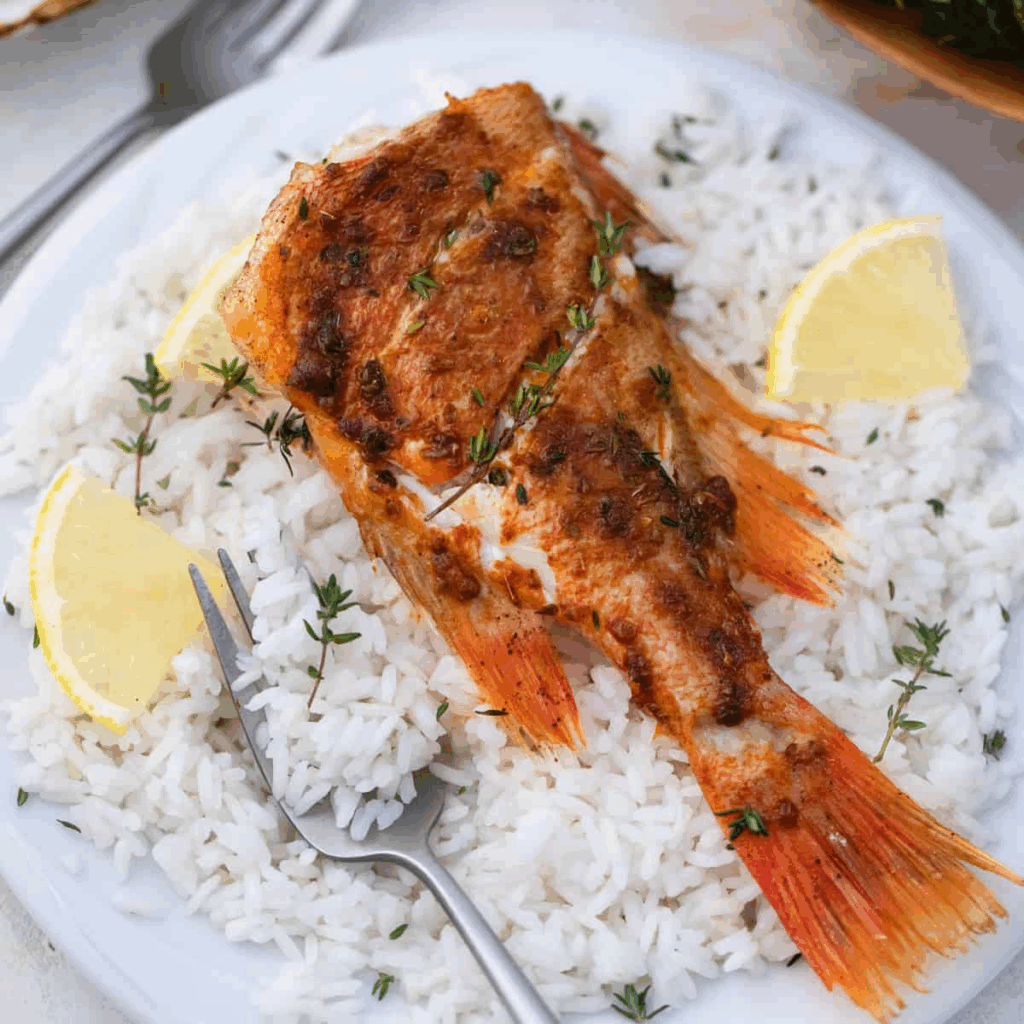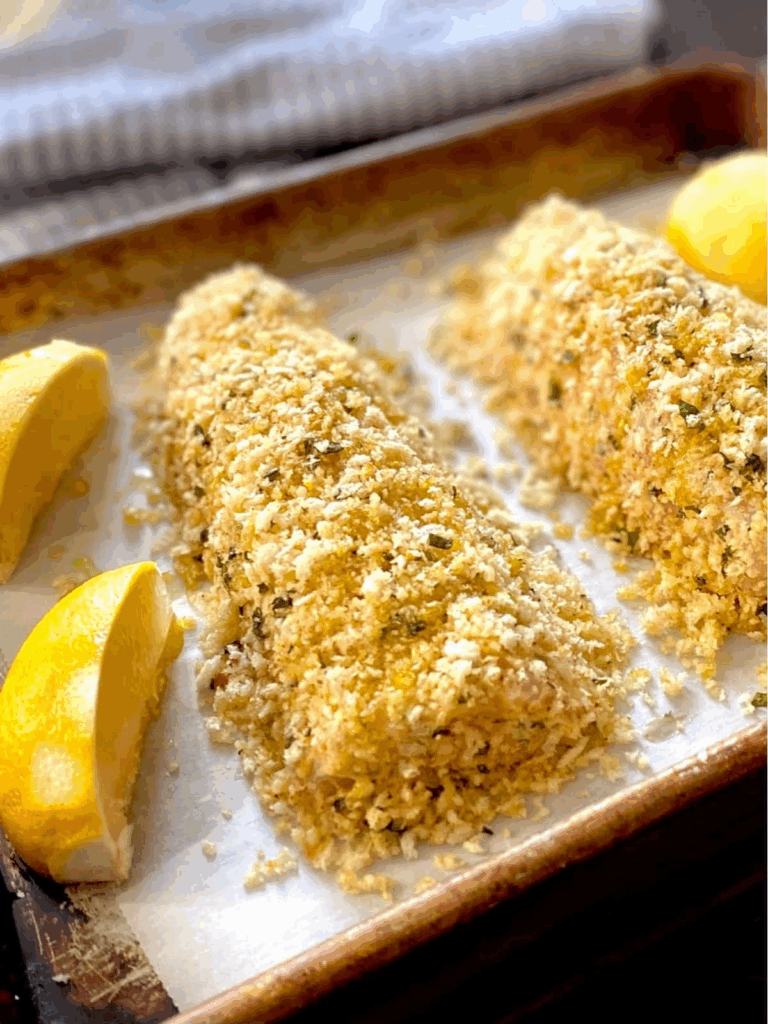How to Cook Rockfish
How to Cook Rockfish: Complete Guide to Flavor, Texture, and Technique

Rockfish is one of my go-to recommendations when someone wants to cook fish at home but doesn’t want something too delicate, too expensive, or too bland. It’s a lean, flaky white fish with mild flavor—somewhere between cod and snapper—but with a unique firmness that makes it especially versatile in the kitchen.
- Why Rockfish Deserves a Place in Your Kitchen
- Understanding Rockfish: What You’re Really Cooking
- Prepping Rockfish for Cooking
- Essential Ingredients and Tools for Cooking Rockfish
- Pan-Searing Rockfish for Crispy Edges and Moist Flesh
- Baking Rockfish in the Oven with Even Results
- Steaming or Poaching Rockfish for Maximum Delicacy
- Time and Temperature Table for Cooking Rockfish
- Cooking Rockfish in the Pressure Cooker
- Microwaving Rockfish: When You’re in a Hurry
- Common Mistakes with Rockfish (and How to Avoid Them)
- Best Sauces for Rockfish Dishes
- Seasoning Rockfish: What Works, What Doesn’t
- Rockfish Recipe Variations: From Tacos to Asian Bowls
- Serving Ideas and Plating Rockfish Like a Pro
- How to Store and Reheat Cooked Rockfish Properly

Why Rockfish Deserves a Place in Your Kitchen
What I love about rockfish is that it takes on flavor beautifully, whether through a sear, a sauce, or gentle steam. It holds together better than tilapia but doesn’t require the finesse that halibut does. Whether you’re pan-searing for a crispy finish or baking it gently with butter and herbs, rockfish adapts. And it’s often more sustainable and affordable than other white fish options.
I’ve cooked it in restaurants, for private clients, and at home when I want something that’s fast, forgiving, and satisfying. If you’re new to cooking fish, rockfish is an excellent place to start.
Flavor profile, texture, and sustainability
Rockfish has a light, slightly sweet flavor that doesn’t overpower sauces or sides. The texture is firm but not tough, and the fillets often come in medium thickness—ideal for even cooking. It’s also a more eco-conscious choice, especially Pacific varieties that are responsibly harvested.
How I introduce this fish to beginners
When I teach people how to cook fish, I often start with rockfish because it responds well to different techniques. I tell them: if you can cook chicken breast, you can cook rockfish. You just need to watch the temperature and avoid drying it out. Everything else comes with experience—and I’ll walk you through it in this guide.
Understanding Rockfish: What You’re Really Cooking
“Rockfish” isn’t just one fish—it’s a family of over 70 species, many of which are sold under the same name. Most of the time, you’ll be cooking Pacific rockfish, also known as rock cod or Pacific snapper. Regardless of name, the fillets behave similarly and respond well to basic cooking techniques.
Species, names, and sourcing
In markets, rockfish may be labeled as striped bass, sea perch, or ocean perch—all depending on region. I always recommend asking your fishmonger about sourcing and freshness. Look for fillets that are firm, translucent white to pinkish in color, and smell clean—never fishy or sour.
If you have access to whole fish, even better. I often roast whole rockfish stuffed with lemon and herbs for dramatic presentation and flavor. But for most home cooks, skinless fillets are the best place to begin.
What makes rockfish different from cod or tilapia
Unlike cod, which can flake apart too easily, rockfish has a more resilient texture that holds its shape when seared or grilled. Compared to tilapia, rockfish has more natural flavor, less water content, and better structure under heat.
I find that rockfish tastes best when cooked just until the flakes begin to separate and the flesh turns opaque—not a minute longer.

Prepping Rockfish for Cooking
Getting rockfish ready for the pan or oven doesn’t take long, but it does make a difference. The key is to remove any remaining bones, dry the surface completely, and cut the fillets into even sizes if needed for consistent cooking.
Skin-on vs skinless fillets
I cook both, depending on the dish. Skin-on fillets are great for searing, because you get that crispy, golden finish that adds texture. But if I’m baking, steaming, or poaching, I usually go for skinless fillets for a smoother finish.
If you’re working with skin-on fish, make sure to scale it thoroughly—even if it looks clean. A few missed scales can ruin the eating experience.
Removing pin bones, drying, and portioning
I run my fingers along the center of the fillet to feel for any pin bones, then remove them gently with tweezers. Drying the fish with paper towels is critical—it helps the surface sear instead of steam. I portion the fish to equal thickness when needed so it all cooks at the same rate.
No marinade is needed for prep—just salt, pepper, and a thin layer of oil to get started.
Essential Ingredients and Tools for Cooking Rockfish
- 2 fresh rockfish fillets (6–8 oz each)
- Kosher salt and black pepper
- High-smoke-point oil (like grapeseed or avocado)
- Optional: butter, garlic, lemon, fresh herbs
- Nonstick or stainless-steel skillet
- Baking sheet or roasting pan
- Parchment paper or foil (optional)
- Digital thermometer (for internal temp check)
- Tongs or spatula
- Paper towels

Pan-Searing Rockfish for Crispy Edges and Moist Flesh
Pan-searing is my favorite way to cook rockfish when I want deep flavor and contrast in texture. A golden, crispy crust and tender inside—that’s what makes this method so satisfying.
I start by preheating a skillet over medium-high heat until the oil shimmers. Then I place the seasoned, dried fillet in the pan, skin-side down if using skin-on. I press gently with a spatula for the first 10 seconds to prevent curling.
Heat control and oil choice
Heat management is key. If the pan is too cold, the fish will steam and stick. Too hot, and it’ll burn before cooking through. I use just enough oil to coat the pan, and sometimes finish with a knob of butter for added richness.
The goal is to build a crust, not rush the cook. I usually sear for 3–4 minutes on the first side, then flip and finish for 1–2 more minutes depending on thickness.
When to flip and how to finish
I only flip once, and only when the fish naturally releases from the pan. If it sticks, it’s not ready. Once flipped, I finish with lemon, herbs, or garlic butter if desired—and sometimes I baste the fillet for a glossy, flavorful finish.
When it’s done, the flesh should be opaque and flake easily, but still moist inside. I rest it on a plate for a minute or two before serving so the juices settle.
Baking Rockfish in the Oven with Even Results
Oven-baking is ideal when I want a gentle, hands-off technique that protects the delicate flesh of rockfish. It’s perfect for infusing flavor through butter, citrus, or herbs and keeping the fish moist from edge to center.
I preheat the oven to 375°F (190°C) and use either a baking dish, parchment packet, or foil wrap depending on the flavor profile I’m going for. For a crusty top, I leave it open. For steam-like moisture, I wrap it tightly.
Foil, parchment, or uncovered
When I want a juicy, herb-infused fish, I wrap the fillets in parchment or foil with lemon, olive oil, and garlic—a technique called en papillote. It traps moisture and keeps every bite tender.
If I’m after a light golden finish, I place the fish uncovered on parchment paper, brush with oil or melted butter, and bake until just flaky. Either way, I monitor it closely after 10 minutes.
Ideal internal temperature and resting
I always check doneness using a digital thermometer placed in the thickest part. The target is 135°F (57°C). Once out of the oven, I let it rest for 2–3 minutes—it will continue to rise slightly to 140°F (60°C), the sweet spot for flaky, moist fish.

Steaming or Poaching Rockfish for Maximum Delicacy
When I want to serve rockfish as part of a lighter or more refined dish, I go with steaming or poaching. These techniques preserve moisture, create clean flavors, and eliminate the risk of overcooking if done carefully.
Liquid options and aromatics
For poaching, I simmer rockfish in a shallow pan of water, wine, or broth, often with aromatics like sliced lemon, bay leaf, garlic, or white peppercorns. The key is to use gentle heat—not a boil. I maintain a light simmer, covering the pan to lock in steam.
For steaming, I place the fillet on a plate or rack over boiling water. I cover tightly with a lid or foil and let the fish cook for 6–8 minutes depending on thickness.
How I preserve moisture and structure
Rockfish becomes fragile when overcooked in water, so I remove it the moment the flesh turns opaque and separates with light pressure. I season after cooking or drizzle with oil and citrus just before serving to keep the surface glossy and the flavor intact.
Time and Temperature Table for Cooking Rockfish
This table reflects actual times and internal temperatures I use in the kitchen, based on a 6–8 oz fillet:
| Method | Temp (F/°C) | Time | Internal Temp | Notes |
| Pan-sear | Medium-high | 5–7 min total | 135°F / 57°C | Skin-side first; finish in butter |
| Oven (uncovered) | 375°F / 190°C | 12–15 min | 135°F / 57°C | Best for fillets with oil or crust |
| En papillote | 375°F / 190°C | 10–12 min | 135°F / 57°C | Steams in own juices and herbs |
| Steaming | N/A (steam) | 6–8 min | 135°F / 57°C | Do not overcook—test with fork |
| Poaching | Simmer (low) | 8–10 min | 135°F / 57°C | Keep liquid below boil |
| Pressure cooker | Low pressure | 3–4 min | 135°F / 57°C | Quick, tender, not for crusty finish |
| Microwave | Medium (50%) | 2–3 min | 130–135°F | Cover and rotate to avoid hotspots |
Note: Always rest fish for 1–2 minutes after cooking.

Cooking Rockfish in the Pressure Cooker
I rarely use a pressure cooker for fish, but when time is tight and I need tender results fast, it’s surprisingly effective—as long as I respect the timing.
Fast and flaky, but requires gentle timing
Rockfish cooks in 3–4 minutes at low pressure. I place it on a steaming rack over a shallow layer of broth or water, season lightly, and let the cooker come to pressure naturally. Once done, I quick-release to prevent carryover cooking.
The texture is similar to steamed fish—moist and flaky—but it lacks any crust. I often use this method when I’m flaking the fish into soups, tacos, or chilled dishes like ceviche bowls.
When I use this method and why
If I’m preparing meals in bulk or want a consistent, hands-off cook, I use the pressure cooker. It’s excellent for dishes where the fish is flaked, mixed, or sauced, not plated whole.
Microwaving Rockfish: When You’re in a Hurry
Microwaving isn’t glamorous, but I’ve tested it many times—and it works. You just need to treat the fish gently, control power, and never overcook.
Covered vs uncovered reheating
I never microwave fish uncovered. I place the fillet in a microwave-safe dish with a spoonful of water or broth, cover it with a microwave lid or damp paper towel, and heat on medium (50–60%) power for 1–2 minutes, checking midway.
If the center is still cool, I add 30-second bursts. Cooking at full power will almost always dry it out or make the texture rubbery.
Avoiding rubbery texture
The key is even moisture and low power. I sometimes drizzle olive oil or melted butter over the fish before heating to protect the surface. Once heated through, I finish with fresh lemon juice, chopped herbs, or a quick sauce to refresh the flavor.
Microwaving won’t give you a crust, but it will reheat rockfish without ruining it—if you’re mindful.
Common Mistakes with Rockfish (and How to Avoid Them)
Even though rockfish is a forgiving fish, I often see people treat it like either chicken or cod—and that’s where things go wrong. Over the years, I’ve narrowed down the most common errors and how I correct them in my own kitchen.
Overcooking and under-seasoning
The number one issue? Overcooking. Rockfish only needs to reach 135°F (57°C), and yet I often see it pushed to 150°F+. At that point, the flakes tighten, the texture goes dry, and the flavor dulls. I always use a thermometer and pull it off heat just shy of done—it finishes while resting.
The second issue is blandness. Rockfish is mild, which means you must season it confidently. Salt and pepper are minimums. I recommend using citrus zest, garlic, or warm spices depending on the method. Without it, the fish fades into the plate.
Handling delicate flesh the right way
Rockfish may be firm raw, but once cooked, the flakes are tender. If you flip it too early in the pan or try to plate it without support, it may break. I use a wide spatula, slide under the thickest part, and never rush the turn.
Also: never place rockfish directly on a dry pan without oil. It sticks. Always use enough fat to prevent tearing.
Best Sauces for Rockfish Dishes
Rockfish pairs well with almost anything, but I tend to build my sauces around acidity, herbs, or gentle creaminess. They bring life and contrast to the fish’s subtle flavor.
Lemon butter, herb cream, garlic oil
For a seared or baked fillet, lemon butter sauce is hard to beat. I melt butter with garlic, then add lemon juice and a touch of white wine. It emulsifies into a rich but tangy finish.
If I’m serving it with vegetables or mashed potatoes, I love an herb cream sauce—shallots, white wine, cream, and thyme simmered down until thick. It adds silkiness without heaviness.
For lighter fare, I finish rockfish with garlic-infused olive oil, chili flakes, and parsley. It’s fast, fragrant, and works for almost any setting.
When I use acid, cream, or fat-based sauces
When the fish is grilled or roasted, I use fat-forward sauces like beurre blanc or browned butter. When it’s poached or steamed, I go with vinaigrettes or citrus-based sauces to cut through the softness.
Cream sauces go best with winter vegetables or starches like parsnip purée or risotto. Acidic sauces work better in spring and summer, especially with greens or cold grains.
Seasoning Rockfish: What Works, What Doesn’t
Because rockfish is mild, I see people either do too little or too much. The trick is balance—highlight the fish without masking it. I build flavor with salt, fat, acid, and aromatics, not just spice.
Simple salt and pepper vs bold spice rubs
For most dishes, I go with kosher salt, cracked pepper, lemon zest, and a touch of smoked paprika. It brings brightness and a bit of depth. If I want to add earthiness, I use cumin and coriander—but only lightly.
If I’m making tacos or bowls, I apply bolder spice blends: chili powder, garlic, oregano, and lime zest. I toast the spices briefly in oil before brushing onto the fillets.
I avoid heavy rubs with sugar or sticky marinades—they burn fast and overwhelm the flesh.
Marinades and when they go too far
A short acidic marinade (10–15 minutes) works well: lemon juice, oil, garlic, and herbs. But longer exposure to acid—especially vinegar or citrus—will start to denature the protein and turn it mushy.
I never marinate rockfish overnight. If I want bold flavor, I build it into the cooking process with bastes or finishing oils.
Rockfish Recipe Variations: From Tacos to Asian Bowls
I’ve built dozens of dishes around rockfish over the years, and what I love is how adaptable it is to any cuisine. With a few tweaks, you can use it in rustic comfort food or modern small plates.
Classic and modern pairings
For a classic dinner, I serve roasted rockfish over a base of roasted potatoes and sautéed greens, finished with lemon butter. For something Mediterranean, I serve it with couscous, olives, and a tomato-caper sauce.
Asian-style? I steam rockfish and serve it over rice with soy-ginger glaze, scallions, and sesame oil. Mexican-style? I flake the fish into corn tortillas with cabbage slaw, avocado, and chipotle crema.
Turning leftovers into new meals
Leftover rockfish is excellent in tacos, rice bowls, pasta, or salads. I crumble it cold into couscous with lemon and herbs for a light lunch, or reheat gently in a skillet for wraps.
One of my favorite tricks is to make fish cakes: flaked rockfish, mashed potato, scallion, and mustard, pan-fried in oil until crisp.
Serving Ideas and Plating Rockfish Like a Pro
Plating matters—even for something as humble as fish. With rockfish, I plate simply but precisely. That means contrasting textures, fresh garnishes, and height.
Sides, grains, garnishes
For starch, I often pair rockfish with rice, couscous, mashed potatoes, or crusty bread. For greens, I use sautéed spinach, arugula salad, or grilled asparagus. Anything with brightness or crunch complements the soft flakes.
I garnish with lemon wedges, microgreens, pickled shallots, or shaved radish. These elements wake up the dish and make it look finished—not thrown together.
How to make it look intentional, not rushed
I place the fish just off-center, lean it slightly on a grain or vegetable, and drizzle sauce with control—not splashes. A final sprinkle of herbs or citrus zest signals care.
Even in casual settings, these small touches make the meal feel special—and that, to me, is what makes a good cook great.
How to Store and Reheat Cooked Rockfish Properly
Rockfish is delicate, and storing or reheating it without care can turn a perfect fillet into a dry, fishy disappointment. I follow a few rules to keep texture and flavor intact for a second or even third serving.
Refrigeration, freezing, and microwave technique
Once cooked, I cool the fish to room temperature within 30 minutes, then transfer it to an airtight container. Rockfish will hold in the refrigerator for up to 3 days. I avoid stacking or pressing the fillets together, which can cause breakage.
Freezing is possible, but I only do it if I’m planning to flake the fish later. I wrap each piece in parchment and then plastic wrap or a vacuum seal bag. In the freezer, it lasts up to 2 months.
For reheating, I use the microwave on 50% power, covered, for short bursts (30–45 seconds). A splash of broth or olive oil helps revive moisture. On the stovetop, I reheat gently in a covered skillet with butter or sauce.
Keeping the texture from falling apart
Never overheat. That’s the golden rule. I always pull the fish just to warmed—not steaming hot. I also avoid oven reheating, which tends to dry out thin fillets. Instead, I refresh flavor with citrus, herbs, or sauces at the table, not during the heat-up.
With the right approach, reheated rockfish can still be tender, flaky, and worthy of a second round at the table.
FAQ: 15 Common Questions About Cooking Rockfish — Answered by a Chef
What’s the best method for cooking rockfish fillets?
I recommend pan-searing if you want texture and speed, but baking in foil is my top choice for beginners—it’s almost impossible to overcook.
Should I remove the skin before cooking?
Not always. Skin-on fillets are great for searing and add crispness. Just make sure it’s scaled. If you’re baking or steaming, skinless might be easier to serve and eat.
How do I know when rockfish is done?
The flesh turns opaque and flakes easily with a fork. I pull it at 135°F internally and let it rest to finish cooking gently.
Can I marinate rockfish overnight?
I don’t recommend it. Acidic marinades will break down the protein too much. Ten to fifteen minutes is usually enough.
What sauces go best with rockfish?
Lemon butter, herb cream, garlic oil, and soy-ginger glazes are my go-tos. I base it on the cooking method and side dishes.
Can I cook rockfish from frozen?
Yes, but I prefer thawing first for even texture. If you cook from frozen, wrap it in foil with seasonings and add 5–7 extra minutes.
What does rockfish taste like?
It’s mild, slightly sweet, and not fishy. Somewhere between cod and snapper—versatile and easy to match with flavor.
Can I grill rockfish?
Absolutely, but use a grill mat or foil. The fillets are delicate and can stick or break on open grates.
How do I keep rockfish from sticking to the pan?
Dry the fish thoroughly, use high-smoke-point oil, and preheat the pan well. Don’t move the fillet until it naturally releases.
What’s the white stuff that sometimes comes out of the fish?
That’s albumin—coagulated protein. It’s harmless, but usually a sign the fish is slightly overcooked. Lower the heat next time.
Can I use rockfish in soups or stews?
Yes. I poach it gently and add it at the end of cooking. It works well in tomato broths, chowders, and coconut curries.
Is rockfish good for kids or picky eaters?
Definitely. Its mild flavor and soft texture make it easy to introduce, especially with simple seasoning or butter sauce.
What herbs pair well with rockfish?
Parsley, dill, thyme, basil, chervil, and tarragon are all great. I rotate depending on the sauce and season.
How do I avoid overcooking rockfish in the oven?
Use a thermometer and pull it at 135°F. If you don’t have one, check for flaking at the thickest point after 10 minutes.




Post Comment